ORICO CyberData Vault NAS Revealed
Orico CF Cybervault NAS Series Coming Soon
ORICO is preparing to launch a new range of hybrid and all-flash NAS systems under the CyberData Vault banner, targeting a wide spectrum of users—from content creators and post-production teams to small office environments and AI development professionals. The information, shared directly by the brand ahead of its upcoming crowdfunding campaign, reveals six individual models: CF500, CF500 Pro, CF6 (All-Flash), CF56, CF56 Pro, and the CF1000. Each variant is engineered to meet specific workflow demands, offering a range of storage bay configurations, performance tiers, and connectivity options. Central to all models is the integration of the ZFS file system, providing snapshot-based protection and data integrity checks, alongside Intel’s 12th or 13th Gen CPUs, DDR5 memory, and support for hybrid M.2 + HDD setups. These NAS units are designed for users seeking full ownership of their data infrastructure with no recurring software fees—delivering private cloud capabilities optimized for speed, scalability, and reliability.
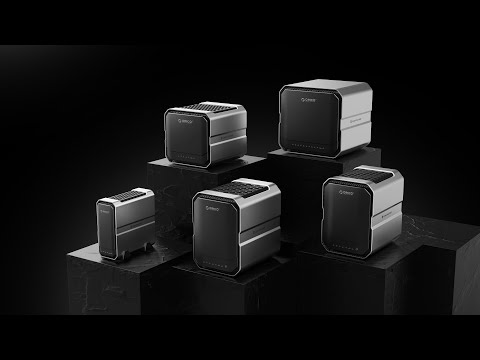
Orico Cyberdata Vault NAS Hardware Specifications
The ORICO CyberData Vault NAS lineup spans a diverse range of hardware configurations, designed to match varying workloads from basic file storage to high-bandwidth, real-time editing and AI processing. At the entry point, the CF500 and CF500 Pro models provide 5-bay HDD storage combined with dual M.2 SSD slots, powered by either a quad-core Intel N150 or an octa-core Intel Core i3-N305 processor. These systems support up to 32GB of DDR5 memory and are well-suited for small studios or home offices seeking an affordable yet capable hybrid NAS.
| Specification | CF500 | CF500 Pro | CF6 (All-Flash) | CF56 (Mixed) | CF56 Pro (Mixed) | CF1000 |
|---|---|---|---|---|---|---|
| CPU | Intel N150 (4C / 4T) | Intel Core i3-N305 (8C / 8T) | Intel Core i3-N305 (8C / 8T) | Intel Core i3-N305 (8C / 8T) | Intel Core i3-N305 (8C / 8T) | Intel Core i5-1240P (12C / 16T) |
| Memory (DDR5) | 8GB (up to 32GB) | 8GB (up to 32GB) | 16GB (up to 64GB) | 16GB (up to 64GB) | 16GB (up to 64GB) | 16GB (up to 64GB) |
| Boot/Flash Storage | 32GB eMMC | 32GB eMMC | 64GB eMMC | 64GB eMMC | 128GB SSD | 128GB SSD |
| Drive Bays | 5 x 3.5” HDD + 2 x M.2 SSD | 5 x 3.5” HDD + 2 x M.2 SSD | 6 x M.2 NVMe SSD (All Flash) | 5 x 3.5” HDD + 6 x M.2 SSD | 5 x 3.5” HDD + 6 x M.2 SSD | 10 x 3.5” HDD + 2 x M.2 SSD |
| RAID Support | 0 / 1 / 5 / 6 / 10 | 0 / 1 / 5 / 6 / 10 | 0 / 1 / 5 / 6 / 10 | 0 / 1 / 5 / 6 / 10 | 0 / 1 / 5 / 6 / 10 | 0 / 1 / 5 / 6 / 10 / 50 / 60 |
| Networking | 1 x 2.5GbE | 1 x 2.5GbE + 1 x 10GbE | 1 x 2.5GbE + 1 x 10GbE | 1 x 2.5GbE + 1 x 10GbE | 2 x 10GbE | 2 x 10GbE |
| USB Ports | 2 x USB 3.2 Gen2 2 x USB 2.0 |
Same as CF500 | Same as CF500 | Same as CF500 | Same as CF500 | 2 x USB4 2 x USB 3.2 Gen2 2 x USB 2.0 |
| Video Output | 1 x HDMI 2.0 + 1 x DP 1.4 | 1 x HDMI 2.0 + 1 x DP 1.4 | 1 x HDMI 2.0 + 1 x DP 1.4 | 1 x HDMI 2.0 + 1 x DP 1.4 | 1 x HDMI 2.1 + 1 x DP 1.4a (8K) | 1 x HDMI 2.1 + 1 x DP 1.4a (8K) |
| AI & AIGC Features | No | No | No | No | Yes | Yes |
| Thunderbolt Support | No | No | No | No | Expansion via RAID cabinet | Expansion via RAID cabinet |
| GPU Dock Support | No | No | No | Optional | Supported | Supported |
| Cooling Design | Active, efficient air cooling | Active, efficient air cooling | Active, efficient air cooling | Advanced hybrid cooling | Advanced hybrid cooling | High-performance multi-zone cooling |
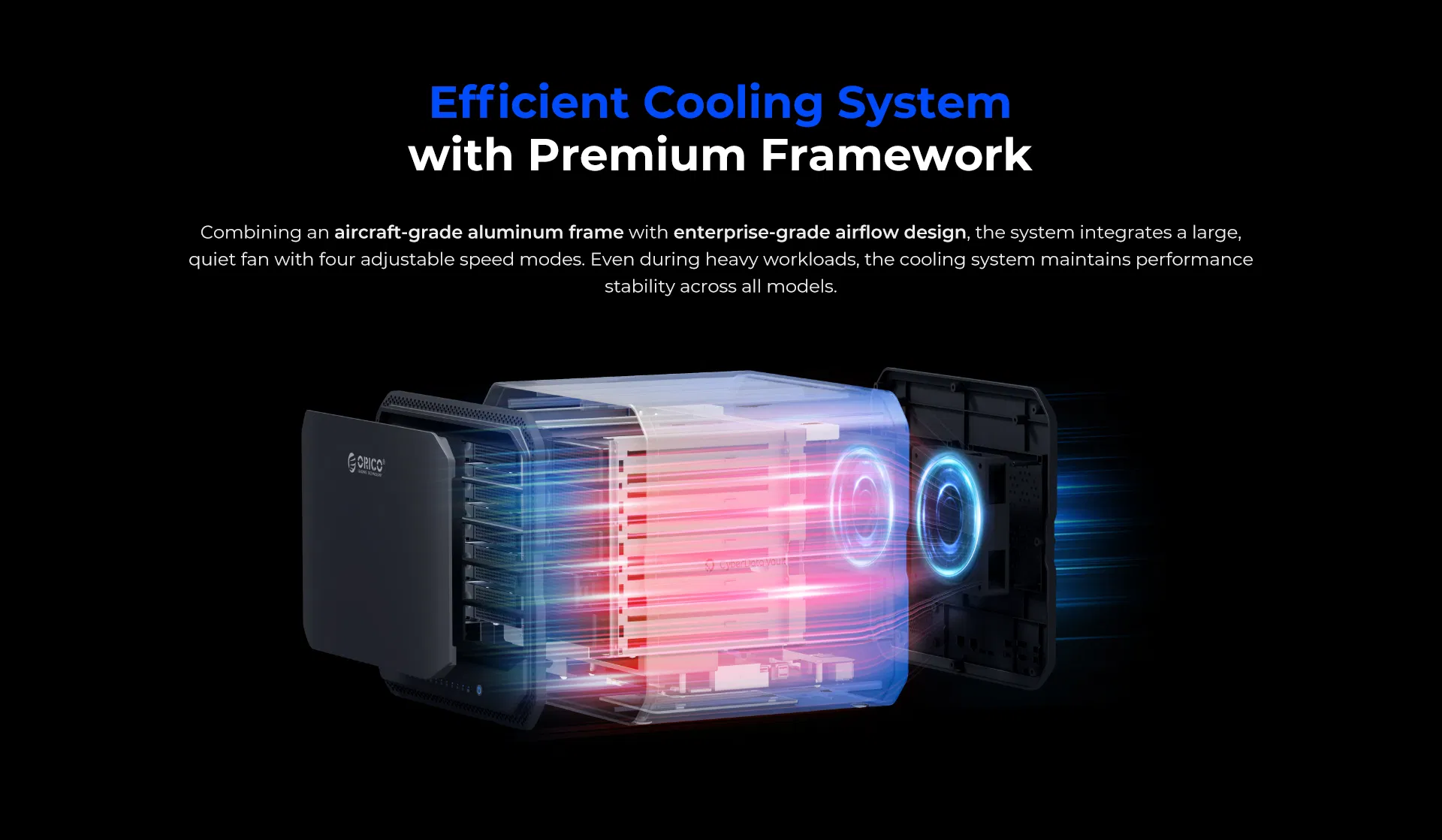
Mid-range models like the CF6 (All-Flash), CF56, and CF56 Pro introduce more performance-oriented features. All three are equipped with the 8-core Intel Core i3-N305 CPU and support up to 64GB DDR5 memory, but differ in storage layout. The CF6 is an all-flash system with six M.2 NVMe SSD slots and no HDD bays, tailored for latency-sensitive applications such as video editing or containerized workloads. The CF56 and CF56 Pro, on the other hand, feature a hybrid design—five 3.5″ HDD bays plus six M.2 SSD slots—offering both capacity and speed. These models also begin to incorporate higher-tier I/O, including 10GbE networking and dual HDMI/DisplayPort outputs.
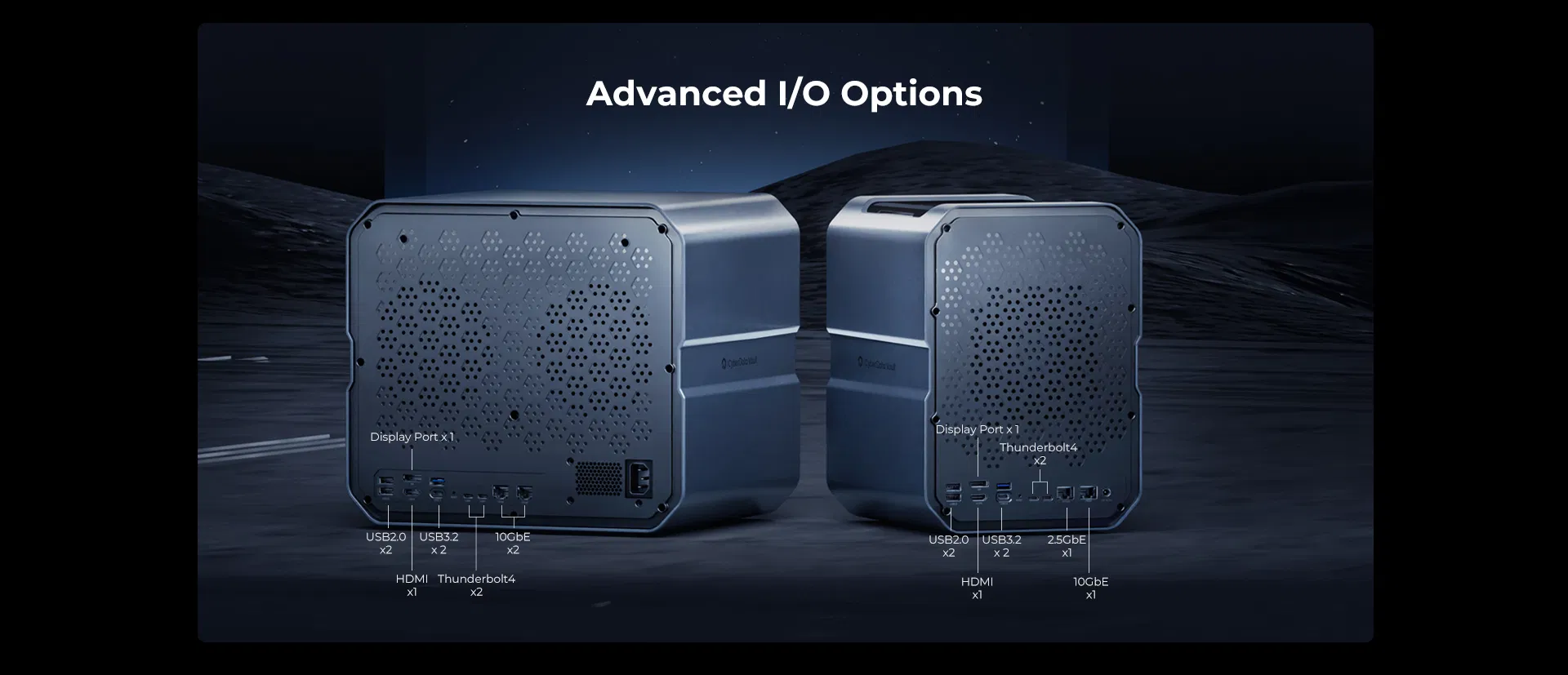
At the top of the range, the CF1000 model pushes into workstation or rackmount territory with 10 HDD bays and 2 M.2 SSD slots, dual 10GbE ports, and a 12-core/16-thread Intel Core i5-1240P processor. With a 128GB SSD boot drive, up to 64GB DDR5 memory support, and expanded RAID options (including RAID 50/60), the CF1000 is positioned for users requiring serious throughput, redundancy, and application scalability. Across the series, thermal management is maintained through active cooling designs, ensuring stable performance even during sustained workloads.
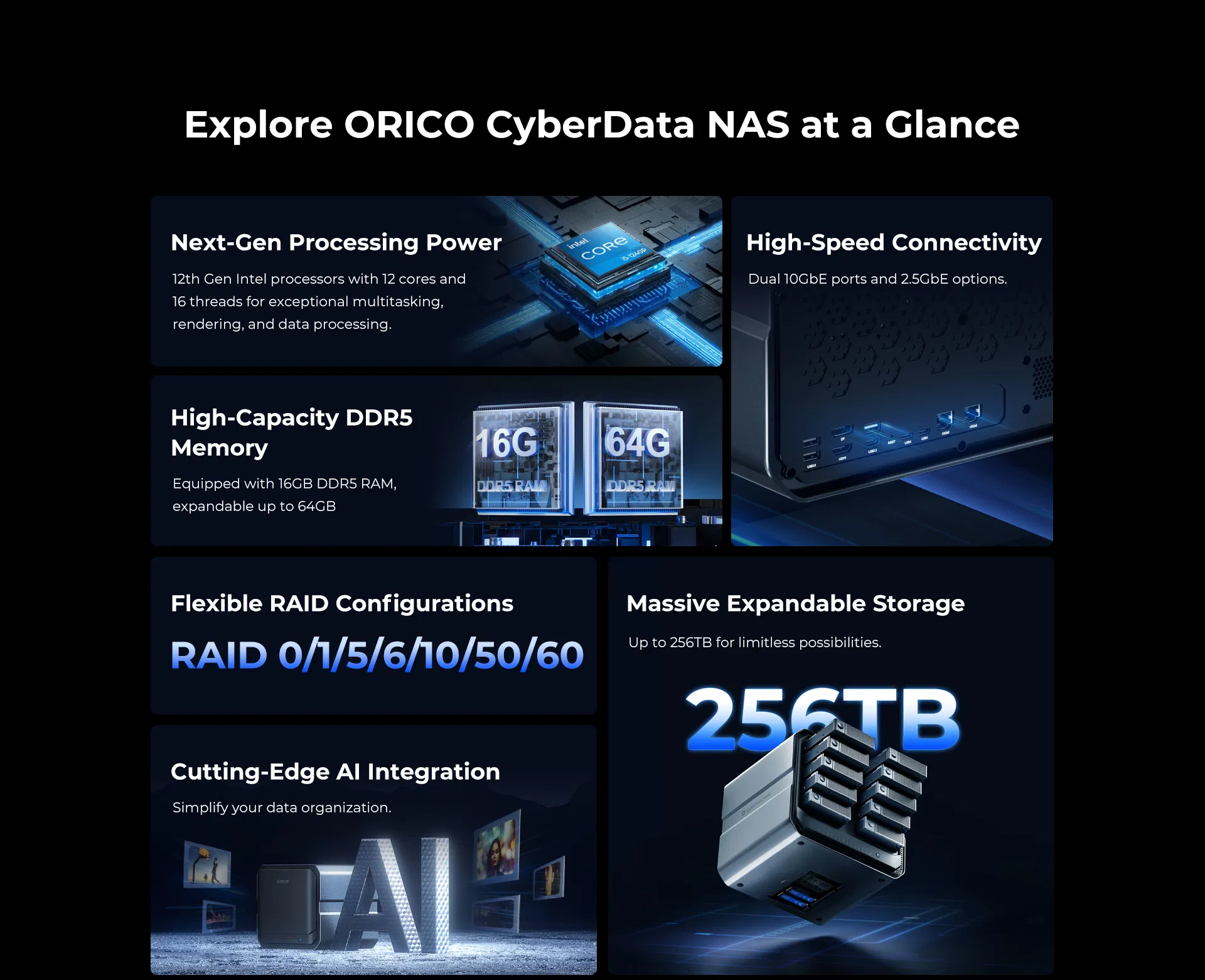
Orico Cyberdata Vault NAS Software Specifications
All six models in the CyberData Vault lineup operate on CyberData OS, ORICO’s fully self-developed operating system designed for professional-grade data storage and media management. Built around the enterprise-grade ZFS file system, the OS supports features such as inline data integrity verification, native encryption, space-efficient snapshots, and advanced RAID configurations (RAID 0/1/5/6/10 on all models, and RAID 50/60 on the CF1000). The ZFS layer also enables up to a 30% performance boost over EXT4 in typical file access and backup scenarios. Data resilience is central to the platform, with support for deduplication, rollback, and point-in-time recovery, making it suitable for high-stakes environments where data consistency and uptime are critical.
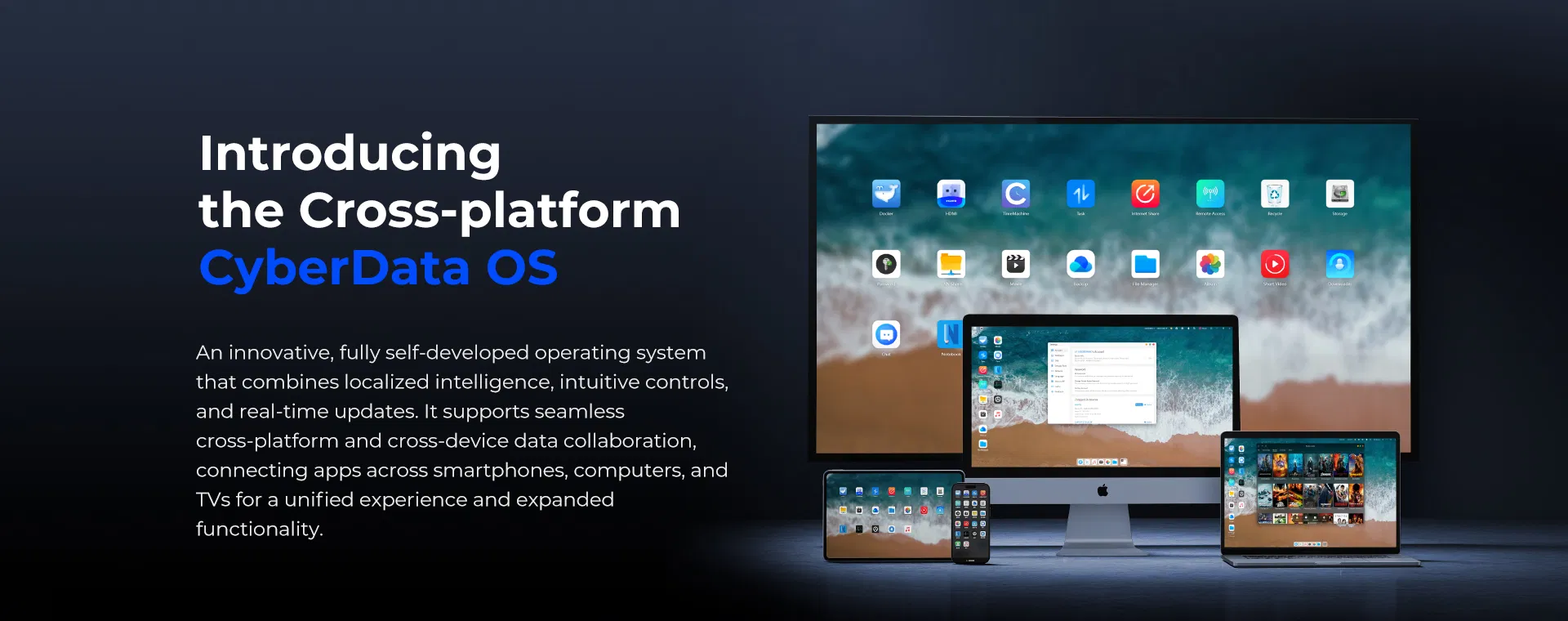
CyberData OS is built with cross-platform compatibility, providing unified access and real-time collaboration between Windows, macOS, Android, iOS, and smart TVs. A full set of user and role management tools enables secure file access across teams or departments, while snapshot-based rollback ensures fast recovery from accidental deletions or ransomware incidents. Remote access is handled through P2P networking, allowing seamless file transfers, Office document previews, and collaborative editing, even outside the local network—without compromising on security. The platform also supports one-click file backup and Time Machine integration for macOS, providing tailored backup workflows for both casual and power users.
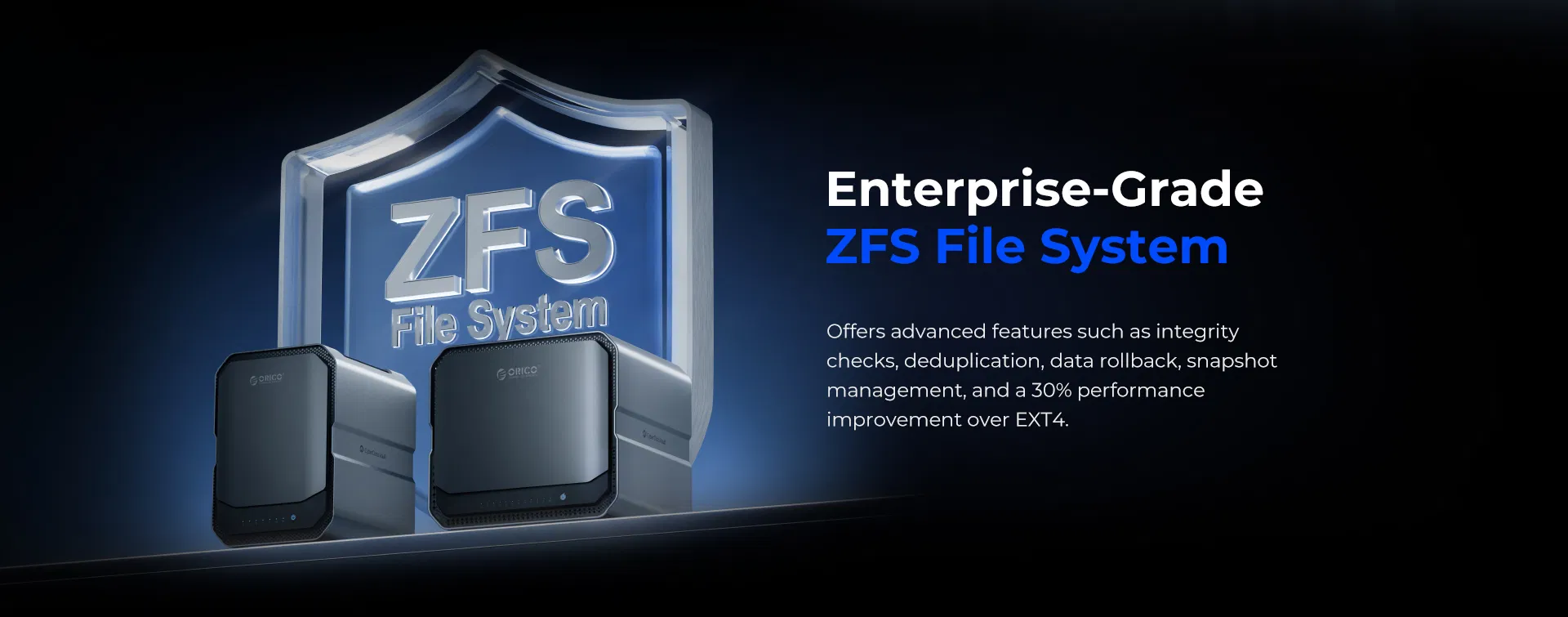
Beyond core storage functions, the OS serves as a media hub, complete with 4K playback support, automatic movie wall generation, and integration with third-party cloud platforms—allowing users to stream or preview content without full downloads. AI capabilities are deeply embedded, particularly in the CF56 Pro and CF1000, where localized AIGC (AI-generated content) features are available. Users can perform semantic image searches, facial recognition, location-based media filtering, and automatic music/video categorization. These AI tools enhance productivity by minimizing manual sorting and retrieval work in large media libraries.
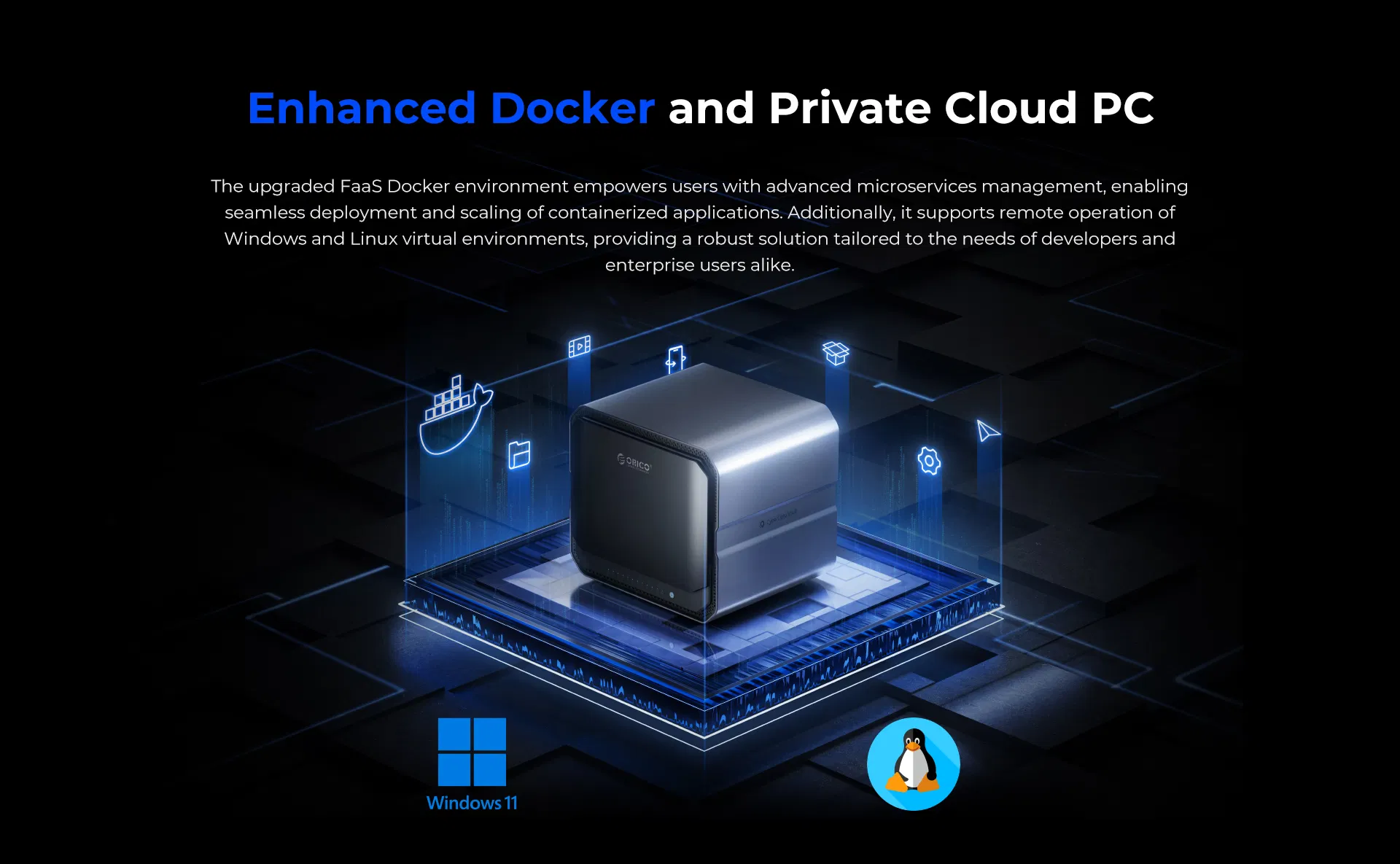
For developers and power users, the system includes an upgraded FaaS-based Docker environment, allowing microservices deployment, scaling of containerized apps, and remote control of Windows and Linux VMs. Paired with the GPU Dock integration, the NAS can be transformed into a high-performance workstation for offline rendering, design work, or even virtual machine gaming. Additionally, ORICO supports expansion through a Thunderbolt RAID cabinet, offering scalable, high-speed external storage ideal for demanding data workflows or secure long-term backups. Combined, these features elevate CyberData OS from a standard NAS interface to a multi-role private cloud operating environment, capable of adapting to a broad spectrum of home and enterprise tasks.
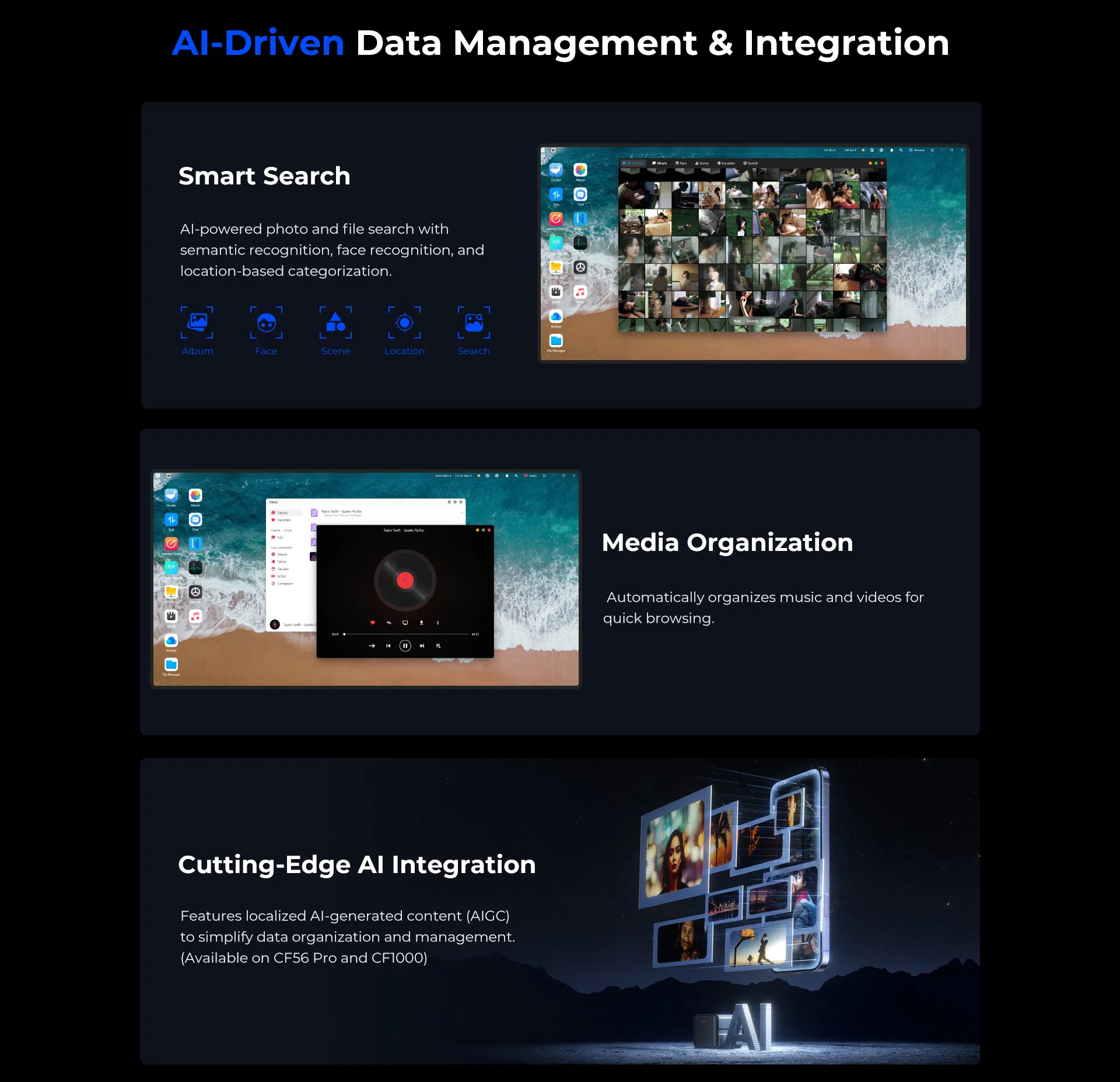
Who Are Orico?
ORICO Technologies Co., Ltd. is a Shenzhen-based hardware manufacturer known for producing a wide range of consumer and professional-grade storage, connectivity, and power solutions. Established in the early 2000s, ORICO has gained recognition for its extensive portfolio of USB hubs, docking stations, enclosures, and more recently, NAS devices. The company has built its reputation around delivering functional, affordable technology designed for both home and enterprise users, often focusing on modular expandability and compatibility with emerging interface standards like USB4, Thunderbolt, and 10GbE. With the upcoming launch of the CyberData Vault NAS series, ORICO is signaling a shift toward deeper integration of AI, high-performance computing, and enterprise-ready data management—all within a private cloud framework tailored to small teams and professionals looking to move away from subscription-based storage platforms.
The Orico Cyberdata Vault NAS – Price and Release Date
The ORICO CyberData Vault NAS series is expected to launch via Kickstarter in late May to early June, marking the company’s formal entry into the high-performance private cloud storage sector. While final pricing has not yet been confirmed, ORICO aims to offer a competitive tiered structure across the six models, reflecting differences in storage configurations, processing power, and expansion options. Positioned as a direct response to a wave of emerging Chinese NAS alternatives, the CyberData Vault lineup is expected to compete with recent and upcoming releases such as the UGREEN NASync DXP series, the Minisforum N5 Pro, and the Aoostar WTR Max. All of these systems target prosumer and professional users seeking hybrid storage, high-speed connectivity, and non-subscription-based private cloud infrastructure—an increasingly active space that ORICO appears intent on disrupting with its multi-model launch strategy.
 SUBSCRIBE TO OUR NEWSLETTER
SUBSCRIBE TO OUR NEWSLETTER 
[contact-form-7]
 Join Inner Circle
Join Inner Circle
Get an alert every time something gets added to this specific article!
 Subscribe
Subscribe
This description contains links to Amazon. These links will take you to some of the products mentioned in today's content. As an Amazon Associate, I earn from qualifying purchases. Visit the NASCompares Deal Finder to find the best place to buy this device in your region, based on Service, Support and Reputation - Just Search for your NAS Drive in the Box Below
Need Advice on Data Storage from an Expert?
Finally, for free advice about your setup, just leave a message in the comments below here at NASCompares.com and we will get back to you. Need Help?
Where possible (and where appropriate) please provide as much information about your requirements, as then I can arrange the best answer and solution to your needs. Do not worry about your e-mail address being required, it will NOT be used in a mailing list and will NOT be used in any way other than to respond to your enquiry.
[contact-form-7]
Need Help?
Where possible (and where appropriate) please provide as much information about your requirements, as then I can arrange the best answer and solution to your needs. Do not worry about your e-mail address being required, it will NOT be used in a mailing list and will NOT be used in any way other than to respond to your enquiry.
[contact-form-7]
 Ko-fi or old school Paypal. Thanks!To find out more about how to support this advice service check HEREIf you need to fix or configure a NAS, check Fiver
Have you thought about helping others with your knowledge? Find Instructions Here
Ko-fi or old school Paypal. Thanks!To find out more about how to support this advice service check HEREIf you need to fix or configure a NAS, check Fiver
Have you thought about helping others with your knowledge? Find Instructions Here

|
 |







